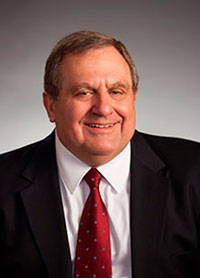Replanting the millions of acres scorched by wildfires in our western woodlands will be herculean task priced in the hundreds of billions.
Thankfully, many businesses, such as Bank of America, Microsoft, and Salesforce, have joined with conservation organizations to fund planting a trillion trees in our public forests by 2028. BofA pledged $300 billion to fight climate change by planting young seedlings. Salesforce plans to “conserve and restore 100 million trees,” according to FastCompany.com.
By the time winter rains and snows arrive, over 5 million acres of forest lands will be burned in California, Oregon and Washington in 2020. That’s on top of the millions of other barren acres awaiting seedlings.
Reforestation funding for federal lands is woefully lacking and that is unlikely to change—especially with the trillions we are spending to arrest the coronavirus and to restore jobs in our economy, and lost revenues to local, state and federal governments.
Replanting trees as quickly as possible is one of the most important ways of reducing CO2, controlling erosion and preventing floods, and, providing clean water for people, fish, farming and wildlife.
However, right now, we are fighting a losing battle. Every year worldwide, 15 billion trees are destroyed by fire or pollution and despite $50 billion a year spent by governments on replanting, there remains an annual net loss of 6 billion trees.
Jad Daley, American Forest president, believes climate change is only going to ramp up the need for reforestation. “By one estimate, there is room in the United States to grow 60 billion new trees, which could capture half billion tons of CO2 from the atmosphere each year.”
Financing is one thing, but the actual tree planting in quite another. That is where drones come in. An experienced and energetic tree planter can plant 800-1,000 seedlings over two acres each day. On the other hand, two operators equipped with drones are 150 times faster and 4-10 times cheaper.
Start-up companies, such as Seattle’s DroneSeed, developed sophisticated 3D ground mapping software and precision tree planting techniques using swarms of drones. The drones survey the burned area designated for planting and identify suitable sites. They identified “micro-sites” such as stumps which would shade the seedlings and provide additional nutrients from decaying wood.
According to DroneSeed, biodegradable capsules loaded with seeds and liquid nutrients are fired from the drones. “This medium provides an ideal growing condition for the seed, and even deters deer and elk from eating it.” With the mapping data, the swarm of drones fly precisely to the suitable location and replant the target area in a matter of minutes depending on the number of acres.
DroneSeed deployed the technology in southern Oregon two years ago. Hancock Forest Management, an international forest landowner with nearly 11 million acres of timberland, contracted with DroneSeed to replant a portion of its land burnt by wildfire in 2018.
On the Okanogan-Wenatchee National Forest, when U.S. Forest Service scientists surveyed the 2018 Cougar Creek Fire site (41,107 acres), they found 30 percent of the soil burned in the Mad River drainage was so severely damaged it would hardly hold water and grow trees while another one-third the soil had moderate damage.
If damaged soil cannot hold water, it increases the risk of flooding, erosion and muddy-debris filled streams. Those conditions are detrimental to fish, wildlife and people. DroneSeed planting works on the steep slopes.
Forests yield 40 percent of the clean water for the world’s 100 largest cities. Trees stabilize slopes in watersheds, reduce flooding and cleanse our air of greenhouse gases.
Hopefully, drone planting works out as designed and private funding increases. It is a “game changer.”
Don C. Brunell is a business analyst, writer and columnist. He retired as president of the Association of Washington Business, the state’s oldest and largest business organization, and now lives in Vancouver. He can be contacted at theBrunells@msn.com.


